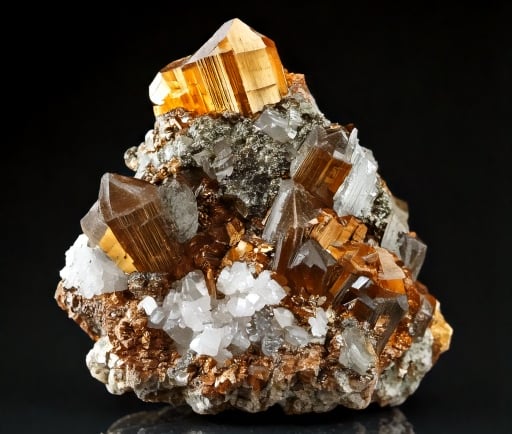Scheelite and Muscovite Crystals: Properties, Uses, and Significance


Introduction to Scheelite and Muscovite
Scheelite and muscovite are two fascinating minerals that hold significant importance in various fields, including geology and industry. Scheelite, composed primarily of calcium tungstate, is known for its remarkable luminescence and high density. Muscovite, on the other hand, is a phyllosilicate mineral belonging to the mica group. Both of these minerals are not only notable for their unique physical properties, but they also find applications that range from technological to ornamental uses.
Properties of Scheelite and Muscovite Crystals
Scheelite displays a range of striking characteristics that make it highly sought after in mineralogy. It typically appears in a color range from white to yellow and can exhibit a brilliant fluorescence under ultraviolet light. The high refractive index of scheelite crystals contributes to their distinctive shine, making them popular among collectors. Furthermore, due to its composition, scheelite serves as the primary ore for tungsten, which is crucial in many manufacturing processes.
Muscovite, in contrast, is recognized for its layered structure, allowing for easy cleavage along its sheets. This feature not only contributes to its aesthetic appeal but also its utility in a variety of applications. Muscovite can be found in shades of green, brown, or colorless, and is often utilized in the production of electrical insulators, heat-resistant materials, and in the cosmetics industry for its sparkle.
Applications and Significance of Scheelite and Muscovite
The applications of scheelite extend far beyond traditional mining. As the primary source of tungsten, scheelite plays a pivotal role in the production of high-strength alloys and tungsten carbide tools, which are indispensable in industries ranging from defense to electronics. With the increasing demand for advanced materials, the extraction and refinement of scheelite are becoming ever more significant.
Muscovite is likewise versatile in its usage. In the realm of construction, muscovite mica is utilized as an insulating material in various applications, providing tensile strength and resistance to heat. Additionally, its cosmetic uses have soared, as it is often blended into makeup products for a shimmering effect, enhancing the visual appeal of various beauty offerings.
Conclusion: The Intersection of Science and Art
In summary, scheelite and muscovite crystals are remarkable not just for their beauty but also for their functional significance in various sectors. Whether in industrial applications or artistic endeavors, these minerals reflect a fascinating intersection of science and art. Understanding their properties and potentials not only enriches our knowledge of geology but also opens doors to innovative applications in numerous fields.
